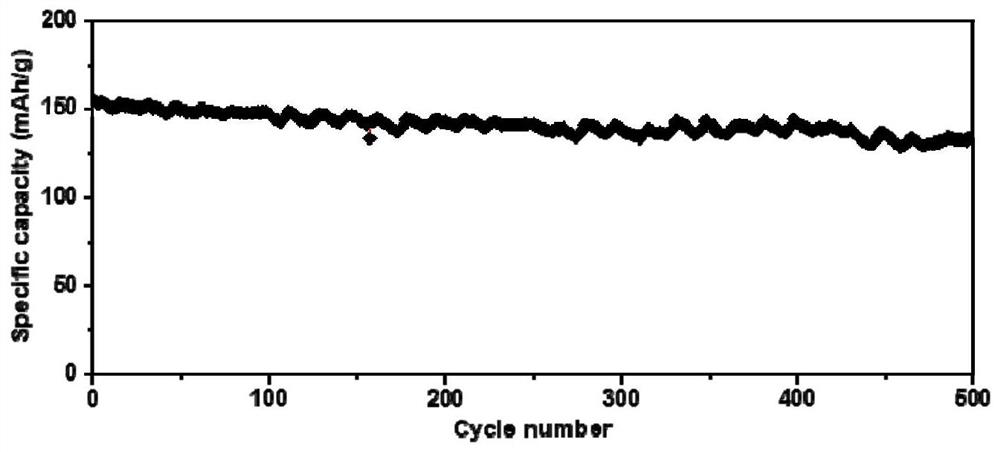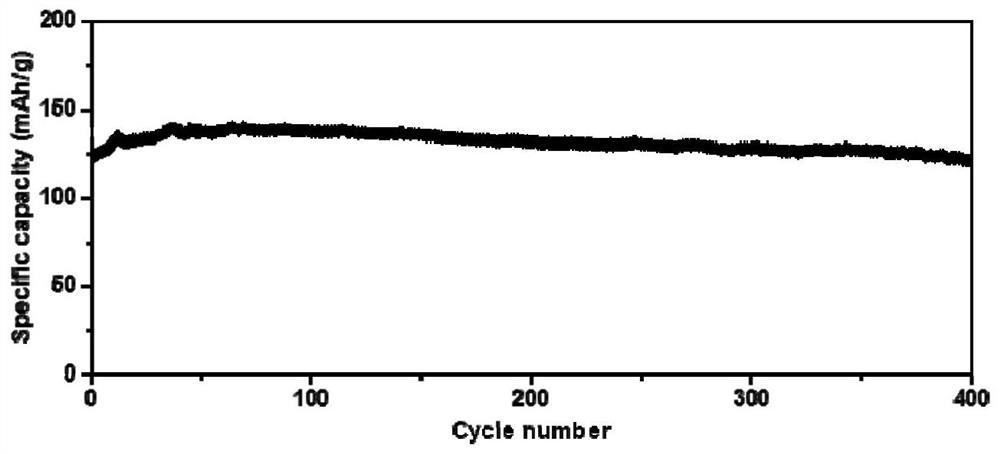A preparation method of lithium metal negative electrode based on lithium-philic three-dimensional carbon-based current collector
A lithium metal negative electrode and current collector technology, which is applied in the field of lithium metal battery negative electrode and its preparation based on lithium-philic three-dimensional carbon-based current collectors, can solve the problems that metal lithium cannot infiltrate the skeleton, poor lithium affinity, etc. Crystal growth, high lithium content, and the effect of alleviating the volume expansion effect
- Summary
- Abstract
- Description
- Claims
- Application Information
AI Technical Summary
Problems solved by technology
Method used
Image
Examples
Embodiment 1
[0026] 1) Preparation of 3D precursor framework materials
[0027] By TEMPO oxidation method, an aqueous solution of bacterial cellulose with good dispersibility was prepared with a concentration of 2 mg / ml; 50 ml of bacterial cellulose aqueous solution, 0.55 g of resorcinol, and 0.75 ml of formaldehyde were added to a beaker, and the mixture was stirred evenly. into the reaction kettle, heated at 100 degrees Celsius for 10 hours, and freeze-dried the precursor skeleton material obtained;
[0028] 2) Preparation of lithiophilic three-dimensional carbon-based current collectors
[0029] Put the precursor skeleton material into a tube furnace, pass nitrogen protective gas, and conduct high-temperature carbonization at a constant temperature of 800 ° C for 2 hours to obtain a lithiophilic three-dimensional carbon-based current collector;
[0030] 3) Preparation of composite lithium metal anode
[0031] The lithiophilic three-dimensional carbon-based current collector is put int...
Embodiment 2
[0034] 1) Preparation of 3D precursor framework materials
[0035] Add 50ml of carbon nanotube aqueous solution, 0.275g of resorcinol, and 0.375ml of formaldehyde to the beaker, stir evenly, put the mixed solution into the reaction kettle, heat it at 100 degrees Celsius for 10 hours, and freeze-dry the precursor skeleton material obtained ;
[0036] 2) Preparation of lithiophilic three-dimensional carbon-based current collectors
[0037] Put the precursor skeleton material into a tube furnace, pass nitrogen protective gas, and conduct high-temperature carbonization at a constant temperature of 800 ° C for 2 hours to obtain a lithiophilic three-dimensional carbon-based current collector;
[0038] 3) Preparation of composite lithium metal anode
[0039] The lithiophilic three-dimensional carbon-based current collector is put into molten lithium metal at 300 °C in a glove box, and the liquid metal lithium can be poured into the current collector by itself. After taking out and ...
PUM
 Login to View More
Login to View More Abstract
Description
Claims
Application Information
 Login to View More
Login to View More - R&D
- Intellectual Property
- Life Sciences
- Materials
- Tech Scout
- Unparalleled Data Quality
- Higher Quality Content
- 60% Fewer Hallucinations
Browse by: Latest US Patents, China's latest patents, Technical Efficacy Thesaurus, Application Domain, Technology Topic, Popular Technical Reports.
© 2025 PatSnap. All rights reserved.Legal|Privacy policy|Modern Slavery Act Transparency Statement|Sitemap|About US| Contact US: help@patsnap.com



